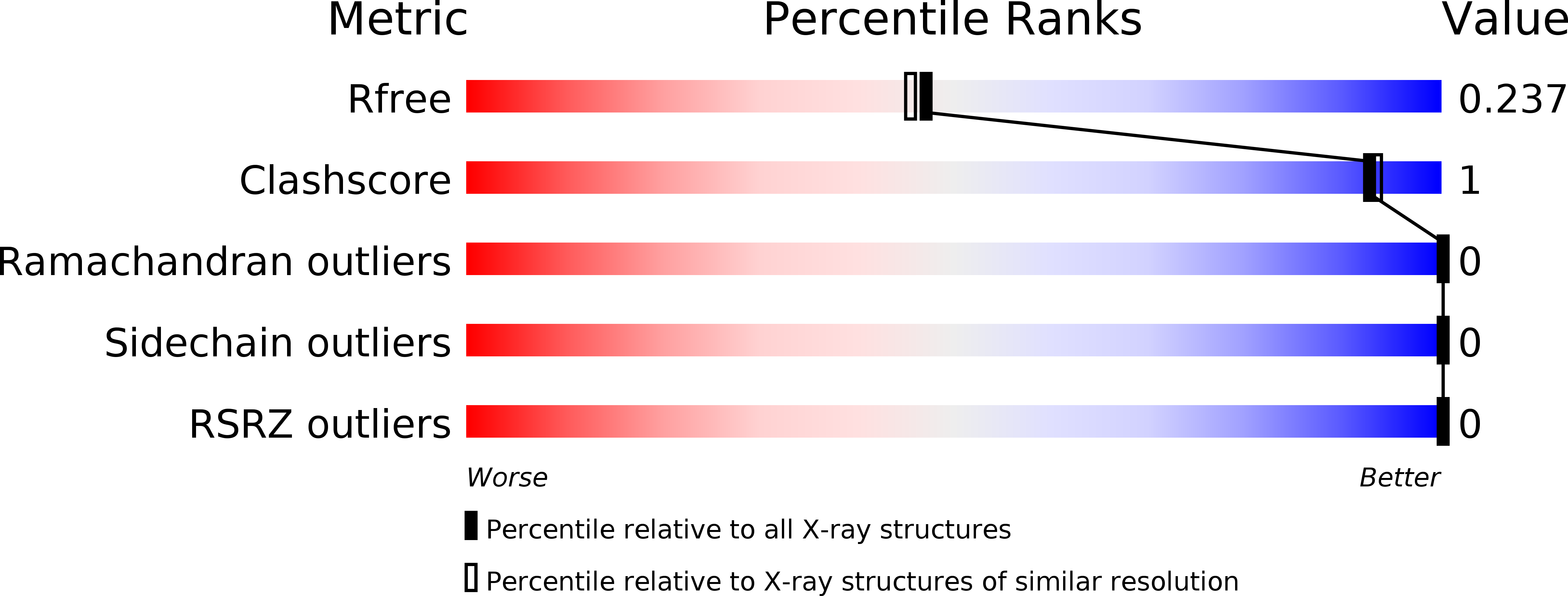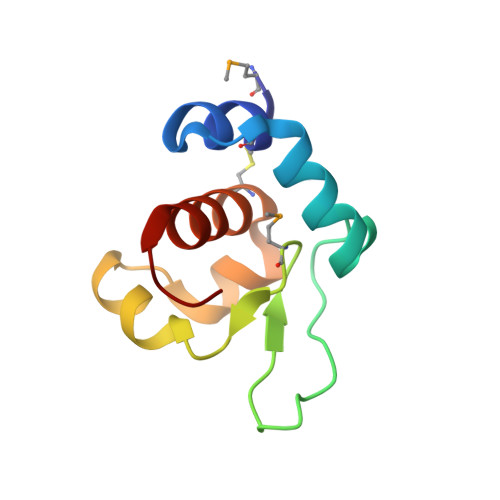Structural Analysis of a Specialized Type III Secretion System Peptidoglycan-cleaving Enzyme.
Burkinshaw, B.J., Deng, W., Lameignere, E., Wasney, G.A., Zhu, H., Worrall, L.J., Finlay, B.B., Strynadka, N.C.(2015) J Biol Chem 290: 10406-10417
- PubMed: 25678709
- DOI: https://doi.org/10.1074/jbc.M115.639013
- Primary Citation of Related Structures:
4XP8 - PubMed Abstract:
The Gram-negative bacterium enteropathogenic Escherichia coli uses a syringe-like type III secretion system (T3SS) to inject virulence or "effector" proteins into the cytoplasm of host intestinal epithelial cells. To assemble, the T3SS must traverse both bacterial membranes, as well as the peptidoglycan layer. Peptidoglycan is made of repeating N-acetylmuramic acid and N-acetylglucosamine disaccharides cross-linked by pentapeptides to form a tight mesh barrier. Assembly of many macromolecular machines requires a dedicated peptidoglycan lytic enzyme (PG-lytic enzyme) to locally clear peptidoglycan. Here we have solved the first structure of a T3SS-associated PG-lytic enzyme, EtgA from enteropathogenic E. coli. Unexpectedly, the active site of EtgA has features in common with both lytic transglycosylases and hen egg white lysozyme. Most notably, the β-hairpin region resembles that of lysozyme and contains an aspartate that aligns with lysozyme Asp-52 (a residue critical for catalysis), a conservation not observed in other previously characterized lytic transglycosylase families to which the conserved T3SS enzymes had been presumed to belong. Mutation of the EtgA catalytic glutamate, Glu-42, conserved across lytic transglycosylases and hen egg white lysozyme, and this differentiating aspartate diminishes type III secretion in vivo, supporting its essential role in clearing the peptidoglycan for T3SS assembly. Finally, we show that EtgA forms a 1:1 complex with the building block of the polymerized T3SS inner rod component, EscI, and that this interaction enhances PG-lytic activity of EtgA in vitro, collectively providing the necessary strict localization and regulation of the lytic activity to prevent overall cell lysis.
Organizational Affiliation:
From the Department of Biochemistry and Molecular Biology and the Center for Blood Research.















